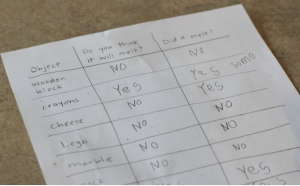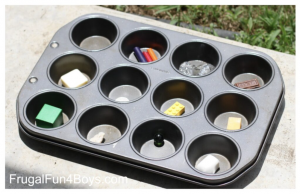 Fit words into a grid in this popular game, often seen in puzzle magazines as fill-ins. The grid looks like a crossword, but there are no normal clues. Instead you must find the right place in the grid for each word from a given list.
Fit words into a grid in this popular game, often seen in puzzle magazines as fill-ins. The grid looks like a crossword, but there are no normal clues. Instead you must find the right place in the grid for each word from a given list.
Spark your thinking!
1. Set up your language arts mini spark recording page: #80: Word Fit Puzzle
2. Watch this short intro video. What is the goal of this game?
3. Go to the Word FIt Puzzle website. Explore the grid sizes and the difficulty levels. Record all of those on your recording page.
4. Start easy to get the hang of it. Choose a level. Record your choice. Play a level. Take a screenshot of your ending time and add it to your recording page or write your ending time on your recording page.
5. Move to a harder level. Choose a level. Record your choice. Play a level. Take a screenshot of your ending time and add it to your recording page or write your ending time on your recording page.
6. What do you like about this game. What changes would you recommend?
7. Share your language arts mini spark recording page and visual with your teacher/EY coordinator.
Want to keep playing? Keep moving up levels as you are ready. Document your progress. Talk to your EY coordinator about doing these puzzles to earn a badge.
 There is a wealth of information when it comes to volleyball! Whether you’re examining individual player statistics, team standings, or breaking down a specific match… MATH IS EVERYWHERE IN VOLLEYBALL!
There is a wealth of information when it comes to volleyball! Whether you’re examining individual player statistics, team standings, or breaking down a specific match… MATH IS EVERYWHERE IN VOLLEYBALL!
 If you like being out on water but aren’t keen on waves, you might want to consider bringing some olive oil with you. In this mini spark you will see that just one tablespoon of olive oil poured over water can spread out within minutes, calming the waves around you.
If you like being out on water but aren’t keen on waves, you might want to consider bringing some olive oil with you. In this mini spark you will see that just one tablespoon of olive oil poured over water can spread out within minutes, calming the waves around you.



 Peter H. Reynolds is a champion of creativity and a best-selling author and illustrator. His books, including The Dot, Ish, The Word Collector, and Happy Dreamer, are published in over 25 languages. They inspire children and adults with messages about creativity, bravery, empathy, and self-expression.
Peter H. Reynolds is a champion of creativity and a best-selling author and illustrator. His books, including The Dot, Ish, The Word Collector, and Happy Dreamer, are published in over 25 languages. They inspire children and adults with messages about creativity, bravery, empathy, and self-expression.








